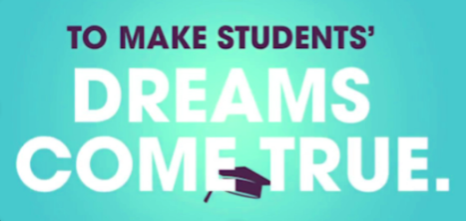
My future English 100 dream course for my MiraCosta College face-to-face class would focus on having students begin their essays on-site, by augmenting technology use in the classroom. Students would continue to write a Narrative Essay and a Rhetorical Analysis (Essay #1). Instead of having students visit the library or cafeteria to practice the art of narration, by observing and writing about their environment, I want students to tap into their memory and use Chromebooks diligently and begin writing a potential setting, dialogue and characterization . . . they would consider embedding in their narrative essays. (In the past, my English 100 students wrote their practice narrative writing, by writing a free-write entry in their in-class Metacognitive Journal Entries in their Green Books). This new approach would allow students to not waste valuable writing time in the classroom and begin the revision process (since students would receive a grade for this low stakes assignment) before submitting Essay #1. For English 100, to meet MiraCosta College’s elements of research requirement, my students also write a Proposal to Solve a Problem Essay (I moved away from traditional “The Research Paper”); students can focus on any problem at the local, state, national, or global level. For Palomar College, this semester my English 202 students completed a library activity and wrote a paper in a group, and surprisingly the students who worked in a group did better than students who worked alone. I want to adopt the same methodology for English 100. In this dream course, I would encourage students to write a Proposal to Solve a Problem Essay as a community of writers, by sharing research, accessing, and working on the same document, using Google.docs or Word. The semester will end with presentations in the classroom or cafeteria highlighting their solutions一and inspiring classmates and, perhaps, the campus to take action. Lastly, for Essay #3, students write a lens perspective essay, by analyzing a film, Black Panther (2018), Roma (2018), Ralph Breaks the Internet (2018) or a film of their choice, compiling observations, and making connections to their feminist theoretical framework in a Google.docs; the class can access the compilation via Canvas. This approach also allows all students to access in-class work, which can allow them to develop their application paragraphs on their own. For my English 100 Fall 2019, I created a two-page step handout for students to prepare them for Essay #3. The handout requires that students reflect/hand write their potential introduction(s), specifically a lead-in strategy, background information, applications paragraphs, and conclusion(s). While I do believe the handout served its purpose this fall semester, my future students would benefit from typing their notes in their Chromebooks, by cutting the work time and having students record potential responses in preparation for Essay #3. Instead of typing their hand-written answers, students could copy and paste their work from the handout to their essays. These changes in the classroom, I believe, would benefit first-generation college students who have not explored college writing. This English 100 dream course experience would serve as an essential stepping stone tool to write for academia and beyond.
What follows is a list of assignments written for WritingwithMachines 2nd Certificate Sequence, facilitated by MiraCosta College professor, curry mitchell:
Unit 1: Feedback and Assessment: “Warnock Says Professors Can Burn Out from Grading—Good to Know It’s Not All in My Head!”
Unit 2: Collaboration and Group Work Online: “The Power of Community in the Face-to-face and Online Environment”
Unit 3: Equity, Accessibility, and Universal Design: “Teaching in the Time of Socialbots”
Unit 4: Course Design and Organization: “Reimagining English 202’s Online Design”
